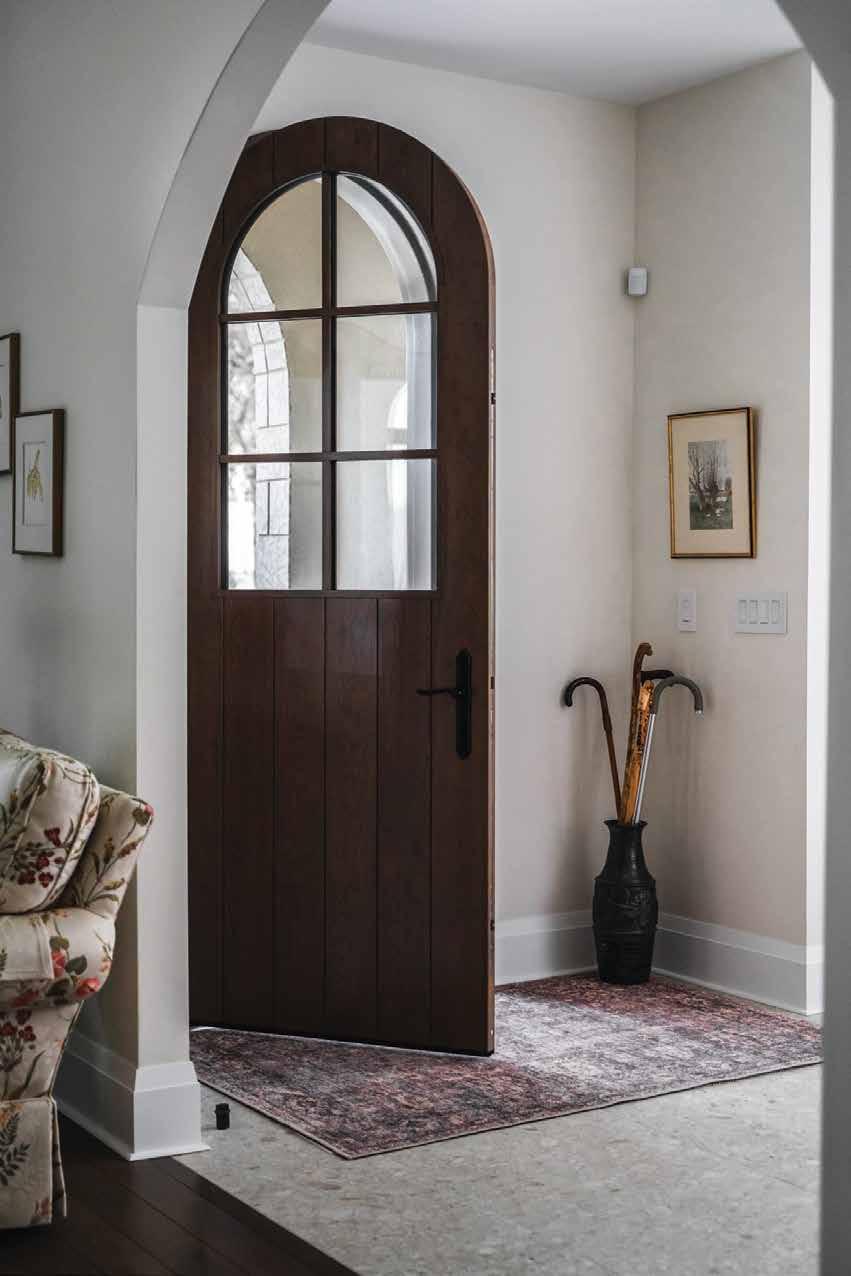

Cellar Door the
THE PARKES TEAM







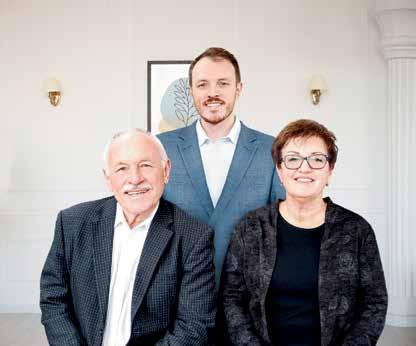
Brad Parkes (Personal Real Estate Corporation)
Garry Parkes & Becky Parkes
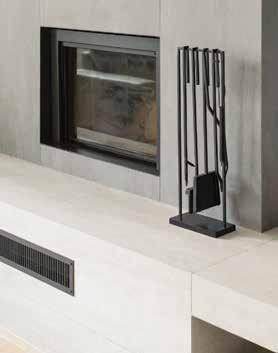

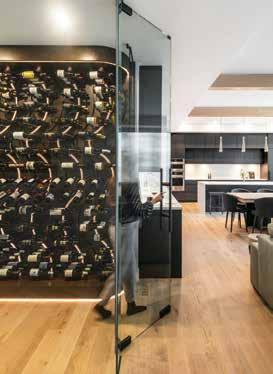









Images by New Copper Photography



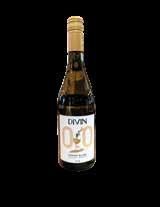





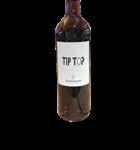

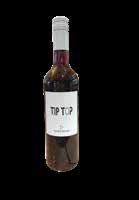

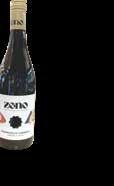
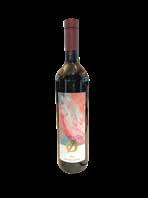









Staying Warm With Winter Wines
Sylvia Jansen’s suggestions will warm your winter nights
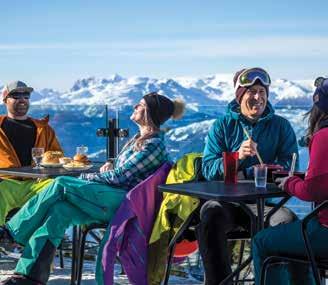

Winter Blooze: The Sober Curious Trend
Ricki-Lee Podolecki explores delicious low- and non-alcoholic options
Après-Ski: True North
Mike Muirhead takes you on a tour of Canada’s best Après-Ski destinations
54 Low and Slow
Simmer, braise, and slow cook your way through the chilly season
Cover: Cozying up at Thermea Spa Village (Photo by Ian McCausland)

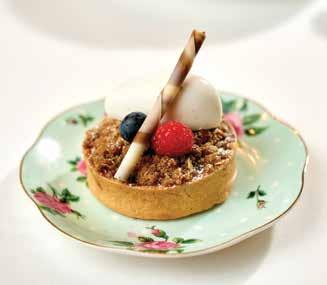
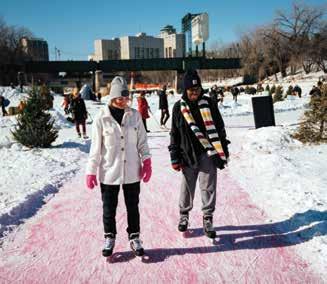


Our fresh Canadian-grown trees are cut in the weeks leading up to Christmas for maximum freshness and minimal needle mess! We defrost and fluff each tree so you can find your perfect tree— with no Charlie Brown surprises!
Celebrate the RON PAULIDAYS with us! Join us throughout December for a wonderful new Christmas family tradition: photos with Santa, sleigh rides, cookies, and hot chocolate— all free for our customers!
Check our social media for dates and times: @ronpaulgardencentre

Visit our magical Department 56 Christmas Village—we’re the biggest dealer in Winnipeg!


A Ron Paul Christmas tree delivered right to my door?
That would be FUNtastic!
Cellar Door the @thecellardoormag
Publisher and Editor
Lisa Muirhead lisa@poisepublications.com
Editorial Board
Tina Jones, Sylvia Jansen, Gary Hewitt, Jill Kwiatkoski, Mike Muirhead, Ricki-Lee Podolecki
Graphic Design
Garfield Street Media info@garfieldstreet.ca
Contributors
Todd Antonation, Andrée-Anne Boisvert, Josie Duthoit, Mindy Friess, Gary Hewitt, Anna Hnatenko, Sylvia Jansen, Tina Jones, Liz Kaye, Megan Kozminski/Media Spur Inc., Jill Kwiatkoski, Steve Lagimodiere, Ian McCausland, Katie Muirhead, Mike Muirhead, Apryl Nadeau, Tom Penner/ Firefly Communications Experts, Ricki-Lee Podolecki, Benoit Vouillon, Dylan Watkins
Step into the cozy calm of the Nature Shop for clothing, décor and body care, or visit the Nature Nook for sustainably minded toys and games for little ones – all in support of environmental education at FortWhyte Alive.
Published for Jones & Company Wine Merchants by Poise Publications Inc www.poisepublications.com
For advertising rates, recipes, and back issues, please scan this QR code:

In 1999, Tina Jones had the vision of opening Banville & Jones Wine Co., a fine wine boutique in Winnipeg, Manitoba that specializes in promoting wine education and lifestyle. In 2020, we changed our name to Jones & Company to reflect our team and focus on shopping local, globally.
1616 St Mary’s Rd., Winnipeg, MB R2M 3W7 204-948-9463 | JonesWines.com | @joneswinemerchants © 2025 Poise Publications Inc.
Printed in Canada by Transcontinental

NATURE SHOP GIFT SHOP: MCCREARY ENTRANCE
1961 McCreary Rd. Alloway Reception Centre
NATURE NOOK GIFT SHOP: MCGILLIVRAY ENTRANCE
2505 McGillivray Blvd.
Buffalo Crossing | Paul Albrechtsen Visitor Centre
FORTWHYTE.ORG/SHOPPING (204) 989-8355 /FORTWHYTEALIVE








a message from tina jones
Winter.
By the time this issue of The Cellar Door reaches you, chances are that the winds have begun to blow winter toward the prairies. Our Canadian winters mean long stretches of cold, snow, and long nights. We live well in this climate by two primary means: bundling up and getting active outside, and warming ourselves inside with great cooking, a crackling fireplace, and a glass of wine to make the evening memorable.
Welcome to winter in The Cellar Door. In our mission to bring you the best wine stories and advice—as well as the best wines—we have assembled a great issue to carry you through the winter months. First, we look to the Great White North for all things winter and wine. Mike offers up some very fun pairings for your favourite local winter activities—and suggests the crème de la crème of Après-Ski destinations across Canada. Gary imparts the history of mulled wines and introduces some homegrown Canadian winemakers who have forged—and are forging— new paths.
We also look at the wider wine world for suggestions about what to drink this season. Sylvia explains why some wines are better “winter wines” than others and why we should look past grape varieties. RickiLee dives into the growing selection of low-alcohol and no-alcohol wines and mocktails, and Jill tells the story of one of our newest family wineries—Pago Casa Gran—including why they will be your new favourite.
Bring yourself in from the cold, stoke up the fireplace, open something special from the great Jones & Co. collection, and celebrate winter with us.
Cheers,

Tina Jones
what we’re drinking

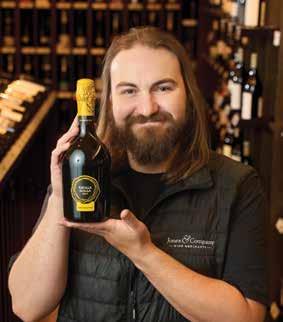



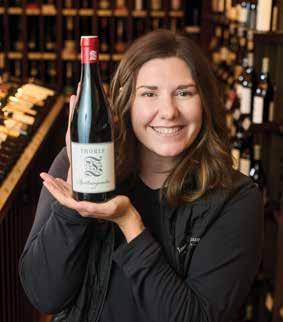
Mindy Friess: Fleur Haut Gaussens 2019 Bordeaux Supérieur Bordeaux, France ($24.99)
Liz Kaye: Chemin des Lions 2024 Pinot Noir Merlot Pays d’Oc, France ($19.99)
Jill Kwiatkoski: Marisol Rubio 2022 Son d Sol Pedro Ximénez Castilla-La Mancha, Spain ($29.99)
Dylan Watkins: San Martino nv Ribolla Gialla Spumante Brut Veneto, Italy ($16.99)
Ricki-Lee Podolecki: Thörle 2022 Spätburgunder Rheinhessen, Germany ($33.99)
Sylvia Jansen: Delaforce nv His Eminence’s 10-Year Tawny Port Douro Valley, Portugal ($49. 99)
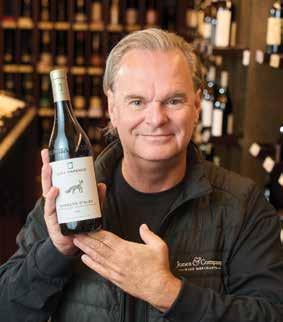

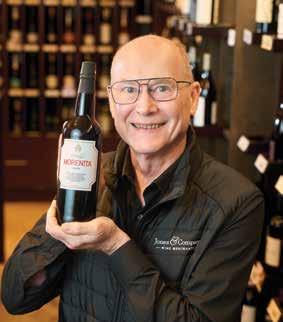
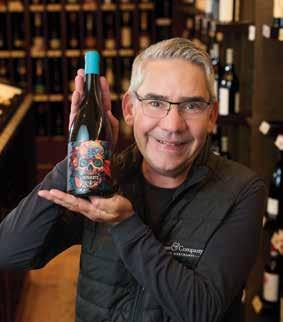
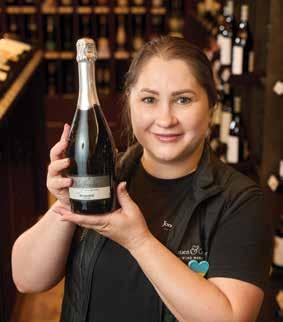

Steve Lagimodiere: Demuerte 2022 Monastrell Yecla, Spain ($45.99)
Todd Antonation: Luca Marenco 2023 Barbera d’Alba, Italy ($41.99)
Anna Hnatenko: Gambellara nv Valfonda Extra Dry Spumante Veneto, Italy ($16.99)
Saralyn Mehta: Crystallum 2024 Agnes Chardonnay Walker Bay, South Africa ($43.99)
Gary Hewitt: Hidalgo nv Morenita Cream Sherry Jerez, Spain ($28.99)


Pago Casa Gran
By Jill Kwiatkoski, Sommelier (CAPS)
When the Jones & Company wine buyers travel abroad to seek new and interesting wines for our customers, we have a few boxes that need to be ticked. Finding a familyrun winery that produces outstanding wines through exceptional organic practices makes us feel like we have won the lottery. Nestled in the heart of Valencia, Spain, in the middle of the countryside, Pago Casa Gran is worth the journey, producing some of our new favourite wines of 2025.
Carlos Laso, third-generation owner of Pago Casa Gran, is an engineer by trade. He expresses his deep respect for family, tradition, and the environment through his dedication to the sustainability of the winery and the land that surrounds it. Carlos’s mother, Manuela Galbis, inherited Pago Casa Gran after her father’s passing when she was a mere 18 years old. Throughout the 1960s, she ran the estate and sold bulk wine locally and at markets. But she had bigger dreams: she started to bottle her wine and when Valencia experienced a crest of economic development under the dictatorship of Francisco Franco, she brought Pago Casa Gran to the international stage.
When Carlos took over in 2006, he dedicated his life to the winery in honour of his mother. He harnessed his background in engineering to protect his land and the environment by integrating gravity flow, heat recovery, and waste management technologies into the production line to reduce the winery’s ecological footprint. Carlos’s pursuit of deep organic and biodynamic practices surpasses Spain’s standards, following the Delinat guidelines—Swiss regulations for organic farming that go far beyond general national requirements and are audited annually. Carlos explains: “This collaboration focuses on several key areas, including living soils, high biodiversity, and energy and water efficiency, emphasizing responsible and sustainable practices.”
With an eye to the changing climate, Carlos’s engineering skills are prominent in Pago Casa Gran’s unique approach to water retention that reuses all water in and around the winery. Carlos has designed retention ponds around the vineyards, changing the slope of the land to help water infiltration and collect rainwater for use during droughts. The team has created 14 water reservoirs that strategically work with each vineyard and a main retention pond for
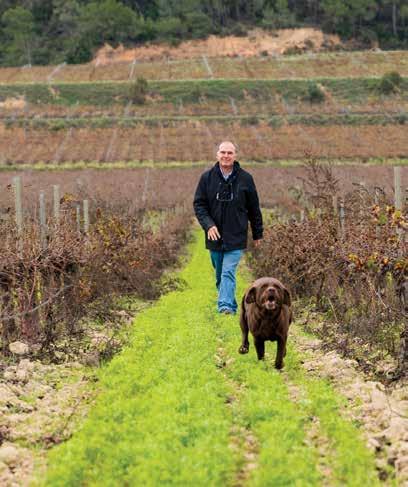
excess water to use if needed. As Carlos states, “promoting biodiversity is not an end in itself but an essential means to transform our vineyards into stable ecosystems that allow the fullest expression of terroir.”
The wines from Pago Casa Gran are all organic and handcrafted. They use native local yeasts in fermentation that transform the wines and reflect the natural terroir of their unique Valencian region. We are proud to be working with Pago Casa Gran, as the exclusive sellers of their unique and beautiful wines in Manitoba.
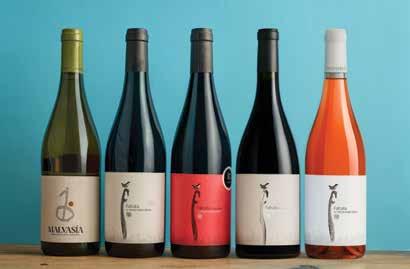
Carlos Laso and Tana in the vineyard (photo courtesy of Pago Casa Gran)
Pago Casa Gran wines are available exclusively at Jones & Company: Monovarietal Malvasia (2023, $27.99); Falcata Red Blend (2024, $22.99); Falcata Casa Gran Red Blend (2021, $31.99); Falcata Arenal Red Blend (2021, $42.99); Falcata Rosé (2024, $23.99).

A Perfect Pairing
Gallagher combines global insurance expertise with local knowledge and industry-specific capabilities to help clients thrive. With over 95 years of experience, we offer innovative solutions and service excellence in more than 150 countries.
Our expert team can help you face the future confidently with:
Commercial Insurance Solutions:
Tailored for businesses of all sizes, from small enterprises to multinationals.
Benefits and HR Consulting:
Customized plans to invest in your people’s health, talent, financial wellbeing, and growth.
Connect with us to discuss your professional or personal insurance needs today.
Commercial and Personal Insurance (204) 925 8550
Group Benefits and HR (204) 956 9860
Gallagher’s main Winnipeg office has relocated from 100 Scurfield Boulevard to 146 Commerce Drive, Winnipeg, MB R3P 0Z6.
Personalized Protection:
Insurance options for your car, home, or family.





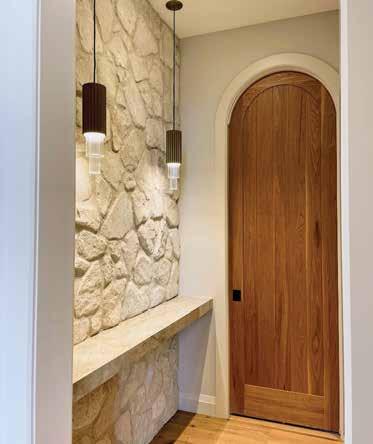


Staying Warm With Winter Wines
By Sylvia Jansen, DipWSET, CSW, Sommelier
Long before central heating, induction cooktops, and dual-zone wine coolers, humans found comfort in the companionship of hot winter meals and hearty drinks. Together, we have rebelled against the cold—or celebrated it— by warming ourselves in the roasted, toasted, or stewed dishes that fill the air with aromas, in the company of others, and in the shared experience of good wine.
Winter brings us occasions for planning events, holiday meals, and weekend guests. A ski or winter getaway might involve planning for weeks, or months, for special meals where everyone stays under the same roof. These occasions are special, and we tend to enjoy lovely, specially selected wines.
What do we select? When it is frigid outside, we lean into warming, weighty, full-bodied wines. To discover the elements that contribute to these qualities means tracing the wine’s structural elements—the combined effects on the palate of alcohol, acidity, concentration, (sometimes) sugars, and (for red wines) tannins.

WINTER WHITES AND ROSÉS
Paul Blanck 2021 Pinot Gris Alsace, France ($38.99)
Boschkloof 2024 Chardonnay Stellenbosch, South Africa ($26.99)
Il Palazzo 2022 Calicento Trebbiano Tuscany, Italy ($32.99)
Berto & Fiorella 2022 Rosato Venezia Giulia, Italy ($23.99)
A NICE WARM BLANKET
Alcohol effectively triggers heat-sensitive receptors inside the mouth, and our brains receive these messages as heat, even in a liquid that is lower than our body temperature. That hot sensation from a sip of neat whisky or Cognac is a delicious example of this effect. Still (table) wines are normally in the range of 8% alcohol by volume (abv) to 16%. Fortified wines (Port, Sherry, and others) are generally higher, ranging from 15% to about 22% abv. The human palate is quite sensitive to alcohol—a small increase of less than 0.5% is noticeable.
In addition, alcohol is also more viscous than water, which contributes to a greater sensation of weight. Wines with low alcohol levels (below 11% abv) tend to feel lighter and cooler. Wines that weigh in over 14% give a sensation of weight and warmth. Whereas an ideal wine for a hot summer evening should be both cool in temperature and lower in alcohol, a wine of 13.5% abv or higher offers a noticeable warmth and a weighty feel on our palates. It can emphasize spicy aroma notes as well, kicking up the impressions of weight and palate presence.
ACIDITY, THE GREAT BALANCING ACT
Wines need to be balanced: fruit and any sweetness are balanced by alcohol and acidity. Within this balance, higher acidity causes a certain lightness on the palate. A wine with low or medium levels of alcohol, low concentration, and high acidity will be light on the palate (think everyday Pinot Grigio). A wine with lower acidity, in balance with other components, will feel fuller (premium Pinot Gris, for example). Some classic winter wines have lower or medium levels of acidity, the result of the grape variety and the ripeness of the fruit—warm climates give greater ripeness. Fine wines with abundant fruit, alcohol, and tannins will often have deceptively higher acidity, balancing other components.

REDS THAT WARM
Don Ramon 2022 Garnacha/Tempranillo Campo de Borja, Spain ($16.99)
Finca Martha 2024 Malbec Mendoza, Argentina ($21.99)
Château Méaume 2021 Bordeaux Supérieur, France ($25.99)
Sella delle Spine 2023 Centènus Selection Aglianico Campania, Italy ($19.99)

A SPECIAL HOLIDAY EVENING
Tawse 2020 Meritage Niagara Peninsula, Canada ($65.99)
Moss Wood 2021 Ribbon Vale Cabernet Sauvignon Margaret River, Australia ($79.99)
Domaine Serguier 2022 Châteauneuf-du-Pape, France ($64.99)
Glaetzer 2021 Amon-Ra Shiraz Barossa Valley, Australia ($309.99/1.5 L)
CONCENTRATE ON THE CONCENTRATION
Many components contribute to the chemical mix that is wine, including flavour and colour compounds from grapes, as well as compounds and further concentration from the effects of oak ageing. Effectively, the higher the concentration of these elements, the more fullbodied we perceive the wine to be.
Wines that are made from grape varieties with naturally thick skins (where colour and a lot of flavour reside) can be good candidates for winter enjoyment: Cabernet Sauvignon and Merlot on their own or blended as in Bordeaux red wines and Syrah/Shiraz are a few of these. Old vines are also treasured because their fruit offers richness and concentration. In addition, dried-grape wines—northern Italy’s red Amarone della Valpolicella is the benchmark— show raisiny richness in a concentrated, deep, dark frame, with relatively high alcohol (often at 16% abv).
TANNINS—WINE’S
STIFF UPPER LIP
All-important for most red wines, some rosés, and skin-fermented whites, tannins come from grape skins. Wine tannins might be gritty and rough or smooth and ripe, but in all cases, they are felt rather than tasted, causing drying and textural sensations in the mouth. Some red wines have lower or medium levels of tannins (like Pinot Noir), and some have high tannins that dominate the palate and give a full-bodied sensation, even when acidity is high (Nebbiolo and Cabernet Sauvignon, for example). Higher tannin levels contribute to the perception of body in a wine.
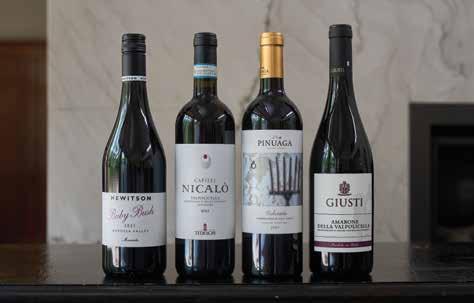
NOW, THAT’S CONCENTRATION
Hewitson 2021 Baby Bush Mourvèdre Barossa Valley, Australia ($32.99)
Tedeschi 2021 Capitel Nicalò Valpolicella Superiore, Italy ($32.99)
Pinuaga 2021 Colección Old Vines Tempranillo Tierra de Castilla, Spain ($35.99)
Giusti 2019 Amarone della Valpolicella, Italy ($91.99)
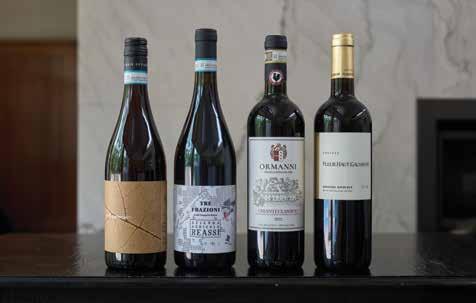
STRUCTURED, FIRM, DELICIOUS
Costacurta 2022 Colline Novaresi Nebbiolo Piedmont, Italy ($34.99)
Reassi 2019 Tre Frazioni Veneto, Italy ($34.99)
Ormanni 2022 Chianti Classico Tuscany, Italy ($36.99)
Château Fleur Haut Gaussens 2019 Bordeaux Supérieur, France ($24.99)
SUGAR IS NOT A BAD WORD
Because sugar adds viscosity, it adds body to a wine and can balance other components. Port, Sauternes, and some Sherries contain high amounts of sweetness that contribute to our perception of weight in these wines. Contrary to popular belief, not all “dry” wines are dry, with sweetness bringing weight and balancing other elements. In fact, many basic commercial red and white wines have some sweetness, sometimes just hovering on detectable amounts.
With good central heating, indoor cooking facilities (or outdoor barbecue for the bold and daring), and good company, any wine can be a “winter” wine. However, in the Canadian winter months, when the outside temperatures plunge well into minus double digits, there is something about coming in from the cold that invites us to warm ourselves, both inside and out.

FORTIFIED AND SWEET


Carmes Rieussec 2016 Sauternes Bordeaux, France ($38.99/375 ml)
Delaforce nv Fine Tawny Port Douro, Portugal ($21.99)
Bacalhôa 2022 Colheita Moscatel de Setubal, Portugal ($19.99)
Vineland Estates 2017 Vidal Icewine Niagara Peninsula, Canada ($49.99/375 ml)




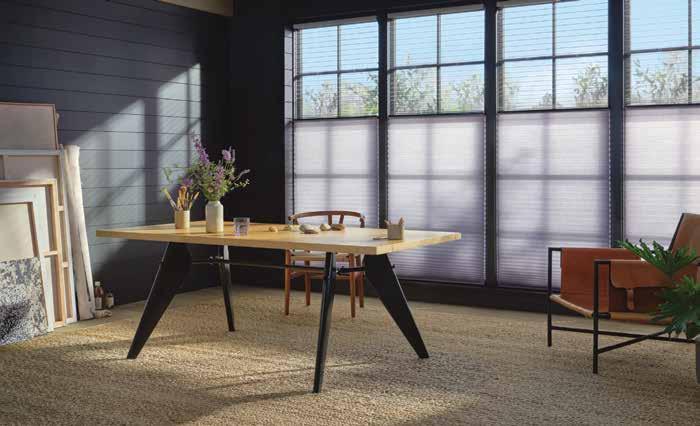

UTOFFEEA: A BAG OF BLISS
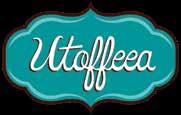
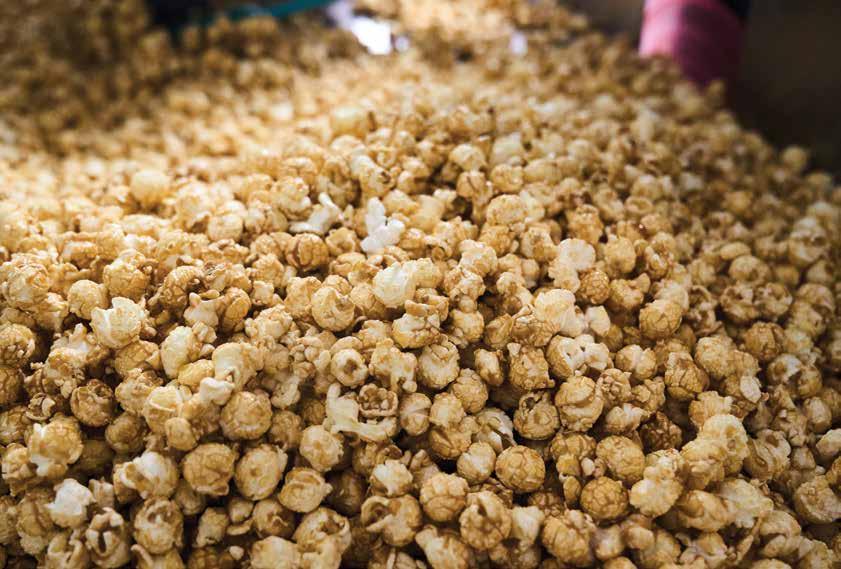
When you talk about building a business from the ground up, you don’t get much more grassroots than Utoffeea. In 2012, Cate Dyck was happily making toffee in her kitchen for friends and parties. A local business caught wind and ordered it for their clients, planting the seed that her toffee had potential as a small enterprise. At her first Third & Bird market in 2013, she sold out in two hours on the first day—foreshadowing the popularity that would ensue.
Cate says that starting and growing a business is much like raising a child (she had two young children when she started the business and two more after it launched). “You always want to give your kid what they need when they need it. That’s how I approach this business: what does it need to grow and keep growing?”
In 2018, Cate built a commercial kitchen off her home so she could grow her “fifth child” from markets to retail. It was still just her at the stove making batches of Cashew Original Utoffeea, with some packagers helping her prep the product for retail. Still, demand crept up—and in 2021, Cate moved into her current space in West St Paul, which houses a storefront, larger commercial kitchen, packaging area, and warehouse for treats ready to ship.
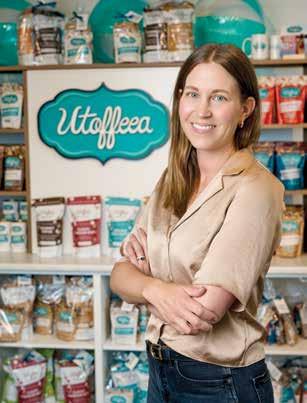

GOING NATIONAL
After two gruelling months on her own, Cate realized that she needed help—and Chef Melinda came on board, bringing with her the kitchen experience needed to scale the operation to what it is today. They now create five regular flavours of Utoffeea—Cashew Original, Cashew Dark, Almond Espresso, Pecan Spice, and Peanut Butter.
The team has also made a very successful—and logical— leap into gourmet popcorn. “Popcorn was a no-brainer,” says Cate. “One day, I just poured the toffee over popcorn and mixed it up. Because toffee starts with butter, it isn’t hard like caramel corn. It’s softer on the teeth—and more delicious.”
Original and Gourmet Toffee Popcorn were the first flavours (natch), before they expanded with more sweet and savoury flavours: Peanut Butter Lover, Chicago of the North, Cheddar Dill Pickle, and—as a nod to its true North roots—Classic Canadian Maple (a huge hit in Niagara!).
In addition to their kitchen, Utoffeea also has an adorable storefront where, from Spring Break until Christmas, you can stop in and buy the latest flavours of Utoffeea, popcorn—and gourmet ice cream! Original Cashew remains the top Utoffeea seller, but now that it’s officially fall, they are preparing for a challenge from their limited-edition Pumpkin Spice Popcorn and ice cream. Christmas brings special Popcorn flavours like Candy Cane and Gingerbread, and of course, Easter is all about their famous Mini Egg Utoffeea!
Utoffeea’s reach continues to expand. While Cate still pops up at Third & Bird and Scattered Seeds markets (which she describes as delicious icing on top of a very large wholesale cake), Utoffeea and Utoffeea Popcorn are available in over 500 stores nationwide and 100 stores just in Manitoba. With Canadians seeking out Canadian products, demand has only grown—you can find her colourful packages of treats everywhere from Sobey’s and Safeway to local food specialty stores, like Jones & Company.
GOING CORPORATE
Cate still serves an incredible niche market locally, back where she started: corporate gifts! Buying a shiny new Audi or Caddy from Jim Gauthier? Don’t be surprised when you find a little Utoffeea gift with your purchase. Cate creates beautiful baskets and boxes of Utoffeea that corporations proudly send out to their clients for holidays and special occasions. “Businesses love that we are local—and their clients are happy, because who doesn’t love Utoffeea and popcorn?”
With all of this growth, Cate hasn’t lost sight of what makes Utoffeea special—she uses premium ingredients like Notre Dame Creamery butter (15,000 lbs per year, in fact), and each kernel of popcorn and piece of toffee is made and packaged by hand by her 10 staff, freeing up Cate to focus on the business end of Utoffeea.
“There are days I miss the satisfying feeling of a hard physical day’s work when I can look at all the toffee and say, ‘I made this,’” admits Cate. “But now, I can look around the storefront, my employees working, and the warehouse, and say ‘I made all of this.’”
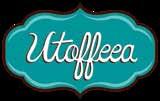
Storefront and ice cream shop: Unit 2, Kapelus Dr., West St Paul (Just 1 minute from the Perimeter)
Corporate Gifting,
GARY’S CORNER
Photo by Ian McCausland

Mull of Content
By Gary Hewitt, DipWSET, CWE, FWS, Sommelier
Long ago, primitive wines were often heated with appealing additives to hide their inevitable bitter, salty, and inhumanely vinegary attributes. Although wine quality gradually improved, ancient Greeks, Roman soldiers, medieval monks, and the Victorian English all imbibed sweetened, spiced wine for warmth and to lift their spirits. Today, mulled wine is a staple of winter festivities, its aroma and taste evoking contentment, warmth, and conviviality.
The history of mulled wine is strewn with colourful anecdotes. The ancient Greeks called their healthful blend of wine, honey, and spices hippocras in honour of Hippocrates, the “Father of Western Medicine.” Aphrodisiac properties attributed to hippocras surely added to its appeal. The more than 20 children of Louis XIV of France may have lent credence to his fervent belief in mulled wine as an aphrodisiac.
Mulled wine is first mentioned in Western literature around 200 BC by Titus Maccius Plautus in his early Roman comedy Curculio. At one point, the title character muses to himself about others around him: “You may always see them enjoying themselves in the hot liquor shops; when they have scraped up some trifle, with their covered heads they are drinking mulled wine.” A recipe for mulled wine shows its prestige by being listed first in the Apicius, one of the oldest Roman recipe collections. This particular recipe combines wine, honey, pepper, laurel, saffron, and dates.
The popularity of mulled wine surged in the Middle Ages (5th to 15th centuries). Monastic orders were improving viticulture and winemaking, but monks and nuns continued to add honey, herbs, and spices to cover wine faults. Although health benefits were still touted— including a mixture of wine with spices, sage, and rosemary called Four Thieves Vinegar to protect against Bubonic plague—mulled wines became increasingly associated with festivities, especially Yuletide celebrations. In the 12th and 13th centuries, exotic, “healthful” spices such as cinnamon, cloves, nutmeg, and ginger became increasingly available through the spice trade. “Spicy wine” became all the rage in Spain and France, and subsequently in England, where the Old English word “myl,” meaning “to sweeten,” had evolved into “mull.”
In Victorian England, a whole category of large-format punches known as “ecclesiastics” was named for positions in the church. The Smoking Bishop became the most famous upon its inclusion in Charles Dickens’s A Christmas Carol: after his enlightenment, an elated Scrooge exclaims to his bewildered clerk Bob Cratchit “I’ll raise your salary, and endeavour to assist your struggling family, and we will discuss your affairs this very afternoon, over a Christmas bowl of smoking bishop, Bob!” It seems that “bishop” was code for Port, and Dickens’ version was likely dosed with clove, baking spices, burnt orange (hence the “smoke”), and red wine.
A strong association of mulled wine with Christmas arose in Germany starting in the 14th century. Called Glühwein, it is a staple at all larger cities’ Weihnachtsmärkte (Christmas markets) and Christkindlmärkte (Christ Child markets) in smaller centres. Like Canadian winters, German winters are attractively cold, days are short, and the twinkling lights shine early in the markets, creating a magical atmosphere of quaint stalls selling Christmas ornaments, local crafts, food, and beverages. The hot Glühwein, spiced with cinnamon, cloves, and citrus fruits, is served in commemorative, collectable mugs. The name, derived from glühen (to glow) and Wein (wine), refers both to the wine and to the inner warmth it engenders.
Mulled wine, with its long history and timeless appeal, is an ideal wintery tipple whether cocooning at home, convening at outdoor events with friends, or celebrating traditional festivals.

1 cup Berto & Fiorella Merlot
½ cup Paarl Brandy
½ cup Cointreau
1 cup apple juice
½ cup orange juice
5 tbsp honey
1 handful star anise
1 handful whole cloves
10 cinnamon sticks
5 oranges, sliced
1 green apple, sliced
Mix all ingredients in a pot or slow cooker. Warm the mixture to 200°F for about 20 minutes. When you start seeing tiny bubbles at the surface, reduce the heat and warm for another 100 minutes. Do not let it boil, as this will make it bitter! Garnish with an orange slice and a cinnamon stick.
FAIRMONT WINNIPEG’S MULLED WINE

Sage Creek’s First Duplex Bungalow Condominiums
Welcome to Sagewood Estates by StreetSide, Sage Creek’s first bungalow condominium community. Featuring 2 and 3-bedroom duplex condos with attached garages, 3-season sunrooms and modern finishes.
Sagewood Estates is ideal for those seeking a low maintenance lifestyle without having to compromise on privacy, quality or comfort.
Learn more at sagewoodestates.ca

Welcome to The Banks by StreetSide, our first ever luxury riverfront condominiums at 1924 St.Mary’s Road. Enjoy designer finishes, large windows and open concept layouts, including a spacious outdoor balcony or terrace. Residents will also enjoy fantastic amenities including underground heated parking & fitness facility.
Learn more at thebankscondos.ca
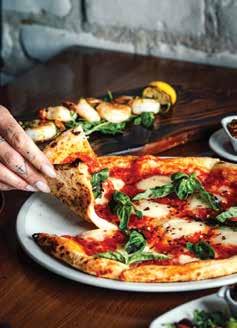


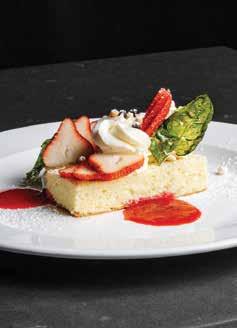
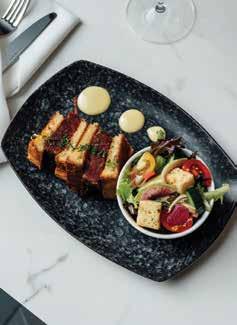








Masonic Memorial Centre
Executive Chef Nitin Sharma Fairmont Winnipeg
Photos by Ian McCausland
Imagine waking up on an island paradise and going to sleep on the coldest day of a Manitoba winter. When Chef Nitin Sharma moved his young family from the Fairmont in Bermuda to Fairmont Winnipeg 7 years ago, from the journey’s beginning to its end, the temperature dropped a gut-wrenching 65°C. But Chef Sharma has never shied away from a new experience—he grew up in northern India, has experience in Italian fine dining, and moved into hotel restaurant work in the Maldives and the Caribbean. Because his culinary management training is based on Western systems, he says, “For me, North America was always the next step. And what better place than Canada?”
Fairmont Winnipeg really celebrates fall and winter in Winnipeg. What do you have in store? There is not a better time in the city to enjoy the creativity and culinary flavours than now. A few of the city’s favourite offerings come to life. Afternoon Tea returns with a nod to Alice in Wonderland, “Queen of Hearts” theme. The city’s most popular dining experience, Le Petit Chef, returned in September and runs through the end of 2025. We look forward to welcoming back the world’s smallest Chef and his charming family. The menu is inspired by the seasons around the world, Spring, Summer, Autumn, and Winter. Thanksgiving is the time to celebrate with family and friends, and we love to make it special for you around your table. Our annual Thanksgiving To-Go is available in October and, of course, this offering returns in December with our traditional festive favourites. Special moments, special memories are created around the table with Fairmont food. The festive season officially begins with the return of The Jolly Gnome, a holiday tradition for festive drinks and great small bites, including this season’s must-try: ice cream cookie fondue! Fairmont loves the festive season— traditional meals, Ugly Sweater Festive Brunch, and a New Year’s Eve at The Velvet Glove restaurant for fondue, which brings 2025 to a memorable close.

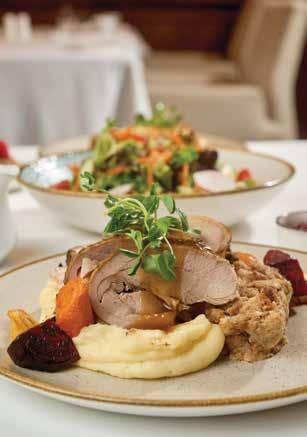

If you were trapped on a desert island and you could only have five ingredients, what would you bring?
Was food an important part of your family growing up?
I grew up in northern India, east of Mumbai, so I belong to the Himalayas, where the cuisine is very, very authentic. I grew up surrounded by flavours that represented the whole country. Our family was very big. In our big joint family, meals were cooked on a rotational basis—when it was my mother’s turn, I was her second in charge. Feeding 20 to 30 people at a time taught me early that the road can be demanding but deeply rewarding. I also realized that food isn’t just nourishment—it brings people together, turns meals into memories, and creates bonds that last. That was my first true apprenticeship, and it shaped the discipline and passion I carry into my career today.
Are you noticing any current food trends?
Vegetarian dishes continue to be a rising trend! However, this is here to stay. The true vegetable experiences, where the vegetable is the star of the plate, will continue to be featured in all of our experiences. Fairmont Winnipeg continues to explore and experiment with flavours and combinations of ingredients that deliver an exceptional experience while showcasing and highlighting a variety of different vegetables.
What is your secret ingredient?
Umami. In Chinese cuisine, their dishes have Ajinomoto, which they get from MSG. But the components of carrots, onions, and mushrooms create a similar chemical reaction. So, I always try to add a little porcini dust or a little truffle oil to any dish to elevate it. It’s subtle, but it creates depth and makes the dish memorable.
If it is just me, and not family (who are vegetarians), I would have a protein, flour to make bread, salt, pepper, and oil. With those ingredients, you can cook almost anything. Nature will provide me with the rest.
If you could cook for anyone at a dinner party, who would you invite?
To have my late father at the table, to let him see the journey I’ve taken, alongside my mother—my toughest critic—and my wife and daughter, my greatest supporters, would be the ultimate dinner. My wife has always been my steady support, and my daughter, my biggest fan, brings a joy and honesty to food that reminds me why I cook in the first place. In that one evening, I’d be able to honour where I come from, embrace those who push me to be better, and celebrate the people who inspire me every day. That would be the most meaningful dinner of my life.

Fairmont’s Thanksgiving To-Go dinner features roast turkey, roasted root vegetables, whipped potatoes, and stuffing.
Fairmont’s Thanksgiving To-Go dinner offers a vegetarian main course option.
Don’t forget dessert!



Don’t
As our life spans increase, a new critical concept is emerging in health and wellness: health span. Your health span is the length of time you live in a healthy state—that encompasses your cognitive, physical, and social well-being. Extending your health span to align with your life span is critical to a happy life as you age.
At Body Measure, we believe that lengthening your health span is about making conscious decisions based on sciencebased knowledge about your body: how it metabolizes food, builds muscle, burns fat, and more.
To develop a full picture of your health, we have developed a comprehensive program called VITAL SHIFT
Your Year of Transformation
VITAL SHIFT is not a fad or a quick fix. It is a one-year, medically guided transformation structured for lasting change that will optimize and lengthen your health span. The program is powered by cutting-edge diagnostics, the latest in body sculpting and metabolic medicine, and expert-led clinical care for nutrition-guided weight loss, strengthening bone density, and building muscle mass. Your plan will be supported by a combination of cutting-edge technology and personalized care by our team of clinical professionals.
Cutting-Edge Technology:
• DEXA scans, Resting Metabolic Rate testing, and FibroScan liver assessments
Comprehensive blood work analyzed and reviewed by experienced Nurse Practitioners
Emsculpt Neo sessions for fat reduction and muscle building
Personalized Care:
• Client-focused support from a Registered Dietitian and Registered Counsellor
Access to medical weight loss therapies, when appropriate
Monthly vitamin injections: NAD+, B12, lipotropics, and more
• Ongoing care with Nurse Practitioners who specialize in weight, hormone, and metabolic health
At Body Measure, we optimize your aging experience from the inside out
Contact us for a private consultation today.
204-691-1887 | info@bodymeasure.ca | BodyMeasure.ca

Client-centred care for our changing bodies
At The Menopause Practice, our focus is on menopause and perimenopause care, but treating your hormonal changes is not the complete picture. We take a comprehensive approach to your care by attending to your mind, body, and spirit.
Perimenopause is a period leading up to menopause that is characterized by chaotic hormone levels that can affect our mental and physical well-being. Menopause marks the moment you no longer get your period and is characterized by low hormone levels.
How can The Menopause Practice help?
We start with your team: our nurse practitioners work closely with our dietician and counsellor to offer a multi-pronged approach to treating your symptoms. In-depth bloodwork will guide our treatments for your metabolic and hormone health. Our customized wellness plans can include dietary recommendations, lifestyle changes, targeted supplements, bone density scans, counselling, and hormone therapy— when needed—to help ease the transition.


What is Menopause Hormone Therapy (MHT)?
Our customized approach helps to relieve many of the frustrating symptoms associated with menopause and hormonal imbalance, including hot flashes, night sweats, mood swings, vaginal dryness, and more. Through comprehensive testing, including blood work and symptom tracking, your nurse practitioner will develop a personalized treatment plan tailored to your unique hormonal needs. Then, we use advanced testing to carefully monitor your hormone levels throughout your MHT, ensuring that your therapy is adjusted as needed to achieve the best results for your health.
In addition to MHT, we also offer treatment options for polycystic ovary syndrome (PCOS), a common condition that can affect hormone levels, causing irregular periods, excess hair growth, acne, and infertility.
What other supports do you offer?
The voyage through perimenopause and menopause can be a wild one, affecting not just your physical health, but also your career, your self-image, and your relationships. We offer counselling services to help you adjust to life transitions, bone density scans to screen for osteoporosis, personalized nutrition counselling, and Emsella technology for pelvic floor strengthening.
Introducing The Men’s Clinic
We are extending our hormone expertise to men!
Hormones play a vital role in men’s overall health and wellbeing. As men age, testosterone and other hormones naturally decline, which can contribute to fatigue, difficulty concentrating, reduced muscle mass, weight gain, mood changes, low libido, and decreased performance in both daily life and the gym.
If you are over 30 and experiencing any of these symptoms, please call us for a comprehensive health assessment. Our program, which includes testosterone replacement therapy, nutritional counselling, supplement guidance, and body composition and metabolism testing, will help you optimize your health and maintain your prime.
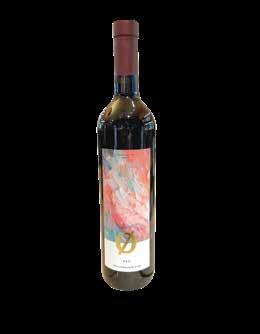
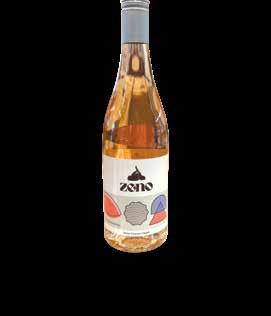
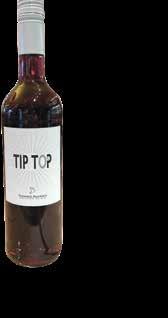
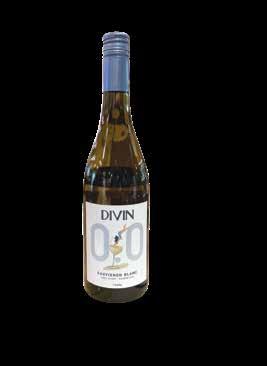

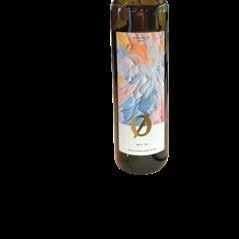



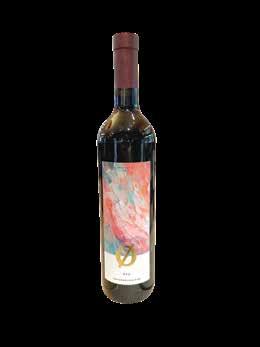
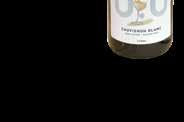
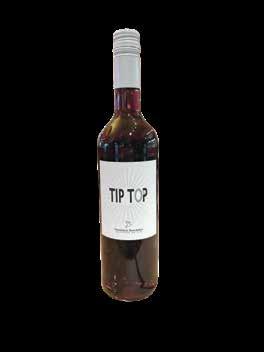

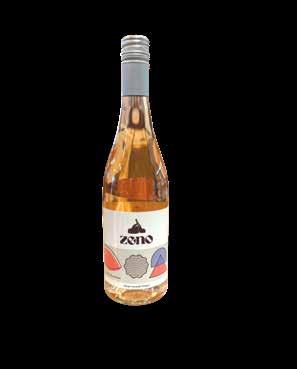

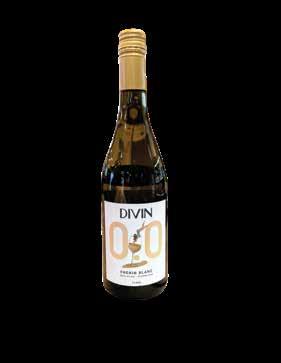

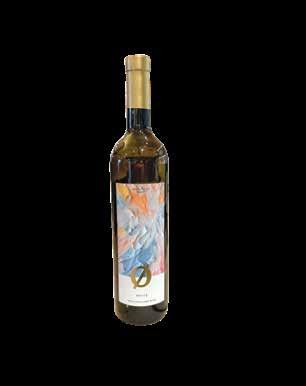


moderation—have been trending for a while. So, many


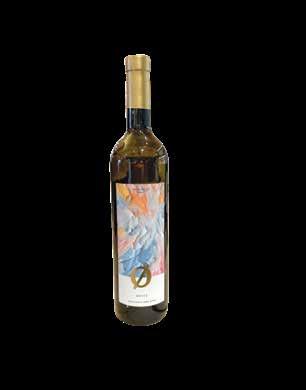



Winter Blooze: The Sober-Curious Trend
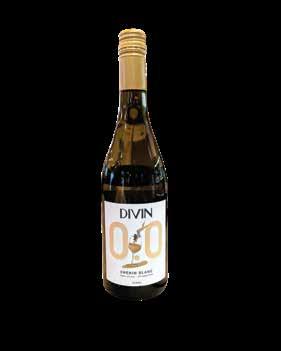


producers have taken up the old adage: if you can’t beat
Our team has assembled a collection of non-alcoholic (NA) and low-alcohol wines that show craftsmanship and care for any of our customers looking to moderate their intake. Our standout picks deliver the best of both worlds— exceptional taste without the high alcohol content.
Easing Up
Most wines contain 12% alcohol or more. Winemakers can achieve lower-alcohol wines through several techniques. One is by choosing grapes with lower naturally occurring sugars. In wine fermentation, yeast consumes sugar to produce alcohol—less sugar means less alcohol. A second way is by controlling the fermentation so that less sugar is converted into alcohol, retaining some natural sweetness. A third is to remove the alcohol after the wine is made.
If you are simply looking to cut back on your alcohol intake, we carry wines with under 10% alcohol, which are light on the palate, lower in sugar, and great for sipping. Vinho Verde from Portugal is a great option: it is naturally lower in alcohol, normally sitting around 9%, and contains zippy acidity and a slight spritz. We can also recommend some great lower-alcohol rosés, like Domaine de Pellehaut.
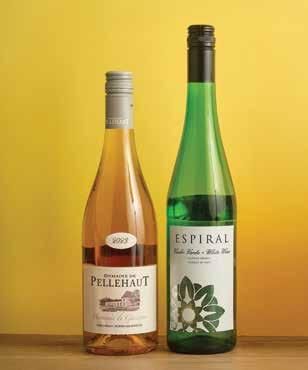
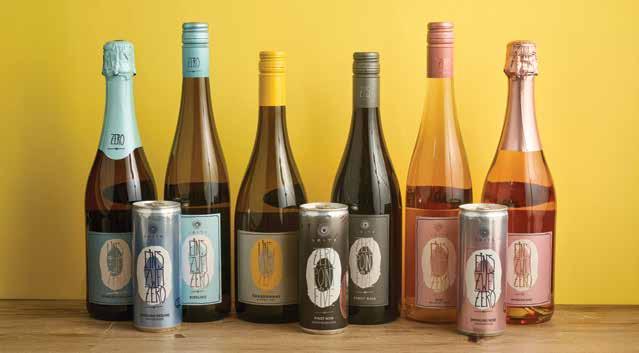
Zero Proof
Dealcoholized or alcohol-removed wines actually begin as full-alcohol, traditionally produced wines! After the usual stages of winemaking, however, winemakers go a step further, putting wines through difficult and expensive technological processes, such as vacuum distillation or reverse osmosis, to reduce the alcohol to below 0.5%. Producers are constantly refining these techniques to
preserve the character and complexity of the wines. The experience of drinking these wines will always be different on the palate than wines with alcohol—for example, NA wines do not have the mouthfeel and richness that alcohol provides. Wineries are always innovating, and with the increase in demand, technology-driven quality will continue to grow the market.
Domaine de Pellehaut 2023 Harmonie Rosé, France ($17.99); So Grape 2023 Espiral Vinho Verde, Portugal ($15.99)
Eins Zwei Zero Sparkling Riesling ($22.99/750 ml, $7.99/250 ml); Riesling, ($18.99); Chardonnay ($18.99); Pinot Noir ($18.99/750 ml; $7.99/250 ml); Rosé ($18.99); Sparkling Rosé ($21.99/750 ml, $7.99/250ml)
Leitz, a producer whose classic German Rieslings we have always loved, has created a line of dealcoholized wines that impress us with their quality and likeness to “regular” wines. Its Eins Zwei Zero lineup offers everything from sparkling wine to Pinot Noir—and each does a good job retaining each grape’s characteristics.
Another one of our favourites is from Nova Scotia— Benjamin Bridge makes a fantastic little fizzy NV Piquette Zero series and an NV sparkling rosé, Nova Zero —all available in convenient 250 ml cans to mix and match.
Masters of Disguise
In yet another category, we have beverages designed to mimic the wine experience without using fermented grape must. Instead, they might feature blends of botanicals, teas, juices, and other creative ingredients to create beautiful “mocktails” that give you that sense of occasion without the alcohol buzz.
Töst creates drinks that closely mimic sparkling wines using a base of white tea and a blend of herbs. Its well-balanced off-dry style is refreshing and satisfies your bubbly cravings. Beyond NA wines, we have also been enjoying Savyll’s zeroproof versions of classic cocktails (Paloma, Mojito, Moscow Mule, and Bellini).
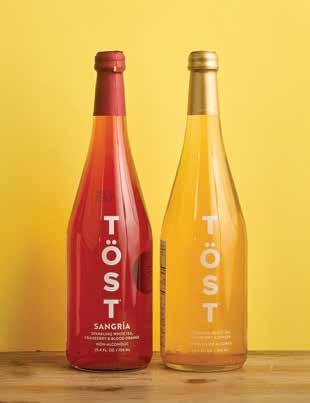


Many people dabble in “dry” lifestyles after the holidays or are simply looking to reduce their alcohol intake for general well-being. If you’re drinking less, you can still treat yourself to a few special bottles you might not normally splurge on— and intersperse them with low-alcohol or NA options to keep your consumption down.
In addition to our current lines of fun low- and noalcohol options, we’re constantly tasting and expanding our selection. So if you’re embracing Dry January, Sober October, or simply looking to reduce your alcohol intake, you no longer have to avoid social situations. Let us help you choose the perfect alternatives for the upcoming holiday season (and its aftermath).
A NOTE ON PRICING
Our customers are sometimes surprised that low-alcohol, dealcoholized wines, and mocktails often cost the same—or even more—than regular wines. Many consider the alcohol content to be the “premium” characteristic. However, NA and low-alcohol beverages can actually be more expensive to produce. In many cases, winemakers still go through the full winemaking process, then add another step, using specialized equipment and techniques to remove or reduce the alcohol.
Benjamin Bridge NA Nova Zero sparkling rosé; Ruby Piquette; Original Zero Piquette; Pink Piquette ($4.99/250 ml)
Töst Sparkling White Tea, Cranberry, and Ginger; Töst Sangria ($14.99)
Savyll Paloma, Savyll Bellini, Savyll Moscow Mule, Savyll Mojito ($5.99)

Our experts understand your industry and are here to help you thrive. Get in touch to grow your business with financial solutions tailored to your needs.
Contact your local relationship manager today.
Giselle Pieczonka
Relationship Manager, Cash Management
Giselle.Pieczonka@cwbank.com
t. 204.926.1531
Kristina Nordquist
Relationship Manager, Prestige Banking
Kristina.Nordquist@cwbank.com
t. 204.926.1541




A Winnipeg Winter
By Mike Muirhead, Sommelier (ISG), CMS
If you are like me, you need to get out of the house in the winter. Whether it is for much-needed vitamin D, your love of winter sports, or just to feel the cool air freeze your lungs, we Manitobans get creative when it comes to enjoying our long, glorious winters. But what, you may ask, should I pair with my winter activities? Don’t worry—we have you covered in our first-ever Winter Activities Pairing Guide.
Skating on the River
One of my favourite things about Winnipeg is the 100+ days when we are all connected by the Assiniboine and Red River trail known as Nestaweya. Hitting The Common at The Forks for a glass of wine or beer is a must. If you can’t quite make it all the way there, I suggest you put a little Don Ramon in your wine skin for when you get home. It will warm you like those little architectural wonders—the river warming huts.
The Rink
Every Prairie winter, there is a rite of passage for families. Maybe you are freezing your butt off at a hockey rink, or standing in the yard and flooding your own little rink, or hauling out the big shovel to clear a large rectangle off your corner of the lake. If you need a little helper to survive the cold, fill that travel mug with some Botter Oltre Piano Primitivo—or try our mulled wine on page 30. Spicy and rich, it can warm the cockles of your heart while your favourite skater leaves it all on the ice.
Snowshoeing at FortWhyte Alive
FortWhyte Alive is a little haven of winding paths (7 km, in fact!) through forests, lakes, and prairie. You might even spot a fox, hare, or deer if you are wily enough. If you don’t have your own snowshoes, you can rent from the helpful folks at the admission desk in the front lobby ($7/per pair or free for members). Throw a couple of cans of bubbly Benjamin Bridge Pink Piquette Zero (it’s nonalcoholic AND Canadian-made) in your backpack to quench your thirst.
Hiking the Assiniboine Forest
When I feel like getting lost in the city, this is my favourite place to disappear. Walking through one of Canada’s largest urban forests on a bright, cold, sunny day will raise your mood—and your flagging vitamin D levels! My post-walk suggestion is a beautiful bottle of Crystallum Peter Max Pinot Noir and a warm fire.
Fat Biking in St. Norbert
Fat biking on the trails in St. Norbert is one of my favourite winter activities to get the blood pumping. In the grand tradition of Tour de France competitors in the 1970s sneaking into cafes to pilfer bottles of wine (later to be paid back by the organizers)—if it helped with their performance, you know it will help yours—I suggest the Cave Spring Riesling in a half-bottle to help “fuel” your ride.
Cross-Country Skiing at Beaudry Provincial Park
A little adventure just outside of the city! Just 10 minutes west of Headingley, you will find a little winter paradise. Beaudry boasts 11 km of groomed cross-country ski tracks (including one that takes you across the frozen river), which are broken down into shorter 2 to 3 km trail options. Pack your backpack with some meats, cheeses, and a bottle of ORO Lambrusco, because the trails also feature rustic shelters that are stocked with wood for a cozy fireside break.
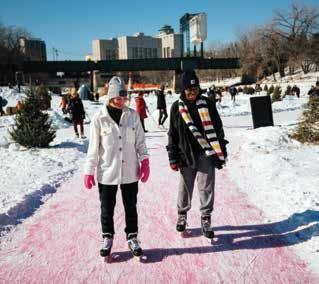

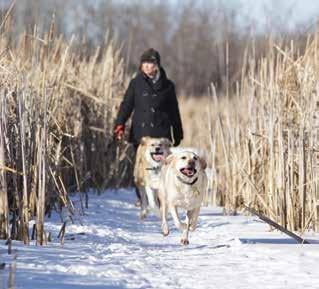
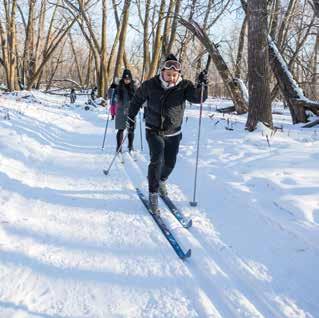
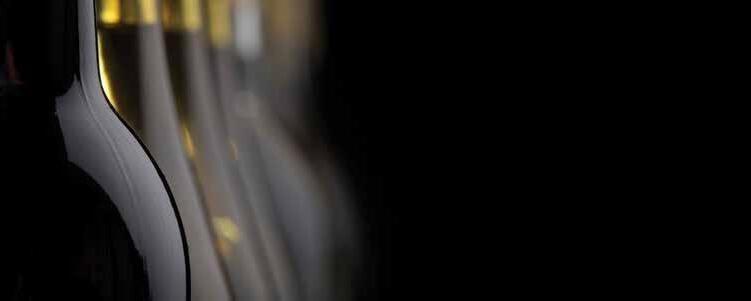
We get it.
Many things in life are better when paired with a glass of wine. Pairing it with reading your insurance policy…not so much. Like wine however, insurance is good to have.
Shoeshoeing at FortWhyte (Photo courtesy of FortWhyte Alive)
Loving the Assiniboine Forest (Photo by Ken Gillespie/First Light)
Skating the Nestaweya Trail (Photo by JP Media Works, courtesy of Travel Manitoba)
Skiing the Beaudry trails (Photo by Handcraft, courtesy of Travel Manitoba)

Ensure your family cottage remains a beloved haven for generations to come.
Why Choose Rawluk & Robert CPAs?
Our accountants will help you navigate the tax implications associated with property transfers, offer strategies tailored to your unique family situation, and provide the experience needed to ensure your family cottage will be passed down smoothly, avoiding potential conflicts and financial strain.
Our Services Include:
Capital Gains Tax Planning: Learn how to minimize the tax impact when transferring your cottage.
Preserving the Adjusted Cost Base: Learn what costs can be used to minimize the capital gain that would be taxable.
Trusts and Estate Planning: Discover the benefits of using trusts to manage and transfer your property.
Planning with Insurance: Insurance can also be a way to help with the transition and cover the tax liability.
Principal Residence Exemption: Understand how to leverage this exemption to reduce your tax liability.
Schedule a consultation today: ph: 204-237-6053 | www.accountants.mb.ca
Your Trusted Partner in Tax Planning
226 ST. MARY’S ROAD, WINNIPEG, MB R2H 1J3






Après-Ski: True North
By Mike Muirhead, Sommelier (ISG), CMS

Although Canadians cannot claim to have invented “Après-Ski,” I would like to think that we have contributed with our own Canuck style. There is nothing more Canadian than hitting the slopes (or trails) all day long and then treating yourself to a post-workout meal and glass of wine. We have crisscrossed the country to bring you four of our favourite Canadian destinations to enjoy the snow and sips that follow.
Mont-Tremblant
One of Eastern Canada’s best-kept secrets is MontTremblant, nestled in the Laurentian Mountains northwest of Montreal. The town has become one of Canada’s hottest weekend getaways with family or friends. The MontTremblant and Mont-Blanc ski hills offer many options for alpine skiing, cross-country skiing, snowshoeing, and hiking. Once you have worked up an appetite, there are many ways to feed your Après-Ski needs. Dance into the wee hours at the famous Le P’tit Caribou or satisfy your appetites at La Forge, which features a steakhouse on the first floor and a bistro on the second floor—both with well-appointed wine lists to finish your day.

Lunch perched above Whistler Blackcomb at Christine’s
Photo courtesy of Le P’tit Caribou
Elkhorn
Manitobans know very well that Après-Ski is not reserved just for downhill extremists. One of our partners, Elkhorn Resort, operates year-round and offers hundreds of kilometres of adjacent groomed cross-country ski trails that border Riding Mountain National Park. Spend the morning skiing, and then spend the rest of the day in Après-Ski mode, enjoying Elkhorn’s Klar So Nordic Spa. The hot and cold cycles will get your circulation system flowing and ease those muscles from your burst of morning activity! The Spa Bistro offers an amazing selection of wine and food, exclusive to Klar So guests.
Lake Louise
I was lucky enough to work a season at Château Lake Louise back when I was just starting out in the service industry. As a ski and hotel destination, they know how to do Après-Ski right. Château Lake Louise, overlooking the Victoria Glacier, is one of Fairmont’s signature hotels. While the hotel boasts many fine dining restaurants, the best place for Après-Ski is Walliser Stube. Drawing from German and Swiss influence, “The Stube” serves one of the best fondues in Canada, with a perfectly paired wine list. Just down the road, in Lake Louise Village, the Post Hotel is one of Canada’s top wine destinations, with a Wine Spectator Grand Award (one of only four in Canada) and over 3,800 labels for an extreme wine experience.
Whistler
Likely Canada’s most famous ski resort, Whistler attracts visitors from all over the world, both for its impressive runs and the food and wine scene that follows. There is something for every kind of post-mountain palate here, whether it is partying at THE Après-Ski destination, The Longhorn Saloon (think Champagne guns, DJ until the early hours, and bottle service) or taking the more easy-going approach at Garibaldi Lift Co. (think mountain views, fire tables, canapés, Champagne, and a fantastic wine list). If you are ready to start your Après-Ski a little early, you can stop mid-mountain at Whistler Blackcomb at the famous Christine’s, located in the Rendezvous Lodge. They have amazing burgers and the best panoramic views of Blackcomb—and if you plan on sampling their Sancerre by the glass, don’t worry—you have the option to take the Blackcomb Gondola to and from!
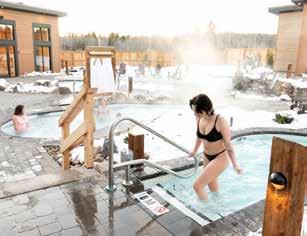

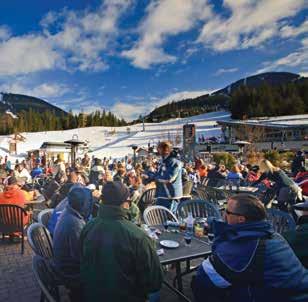
Après-Ski at Longhorn
Photo courtesy of Fairmont Château Lake Louise
Photo courtesy of Elkhorn Resort
Pioneers and Aspirants: Six Canadian Wineries
By Gary Hewitt, DipWSET, CWE, FWSM, Sommelier
There is surging interest in Canadian wines. Buy-Canadian attitudes and staycation visits to Canadian wine regions have meshed beautifully with the exceptional quality emerging from a maturing wine industry. They have achieved the world’s respect with regard to Chardonnay, Pinot Noir, and Riesling wines from Ontario and British Columbia, and consistent brilliance with other varieties is on the horizon. Winemakers understand their terroirs and expertly handle vintage variability.
Now is a great time to laud the excellence of a handful of pioneers, producers established early in their wine region’s development, and aspirants, later entries with worldclass goals. The following six wineries are elite producers from British Columbia’s Okanagan Valley and Ontario’s Niagara Peninsula and Prince Edward County.
British Columbia
Blue Mountain Winery: Pioneer
Okanagan Falls, South Okanagan Valley
Focus: Pinot Noir, Chardonnay, Gamay Noir, and Traditional Method sparkling wine
In 1971, husband and wife Ian and Jane Mavety planted their original five hectares and sold grapes to commercial wineries. In 1991, they established their Blue Mountain label and became clear leaders in the valley’s wine industry. Today, son Matt and daughter Christie lead the Blue Mountain team, refining their sustainable vineyard and winemaking practices. High-density planting, distinct micro-climates, hand labour, individual ferments, and overall attention to detail reveal the potential and individual character of their amazing sites in precise, complex wines with a sense of terroir.

Le Vieux Pin: Aspirant
Black Sage Bench, Oliver, South Okanagan Valley Focus: Syrah, Viognier, Roussanne, Marsanne, Pinot Noir Rosé
Under the umbrella of Enotecca Wineries and Resorts, Le Vieux Pin’s owners, Sean and Saeedeh Salem, set out to craft quintessentially Certified Sustainable French-style wines in the Okanagan Valley. In 2010, when French-trained Severine Pinte assumed the roles of viticulturalist and winemaker, she fit right in. Drawing on fruit from six distinct vineyards, Le Vieux Pin makes compelling red wines primarily from Syrah and thrilling white wines from the traditional Rhône Valley varieties, Viognier, Roussanne, and Marsanne.

Christie Mavety (courtesy of Blue Mountain Winery)
Le Vieux Pin Ava ($63.99); Petit Rouge ($36.99); Cuvée Violette Syrah ($56.99).
Little Engine Wines: Aspirant
Naramata Bench, Penticton, South Okanagan Valley Focus: Chardonnay, Pinot Noir, and Merlot with some Sauvignon Blanc and Cabernet Franc
In 2011, entrepreneurs Steven and Nicole French bought their first vineyard on the esteemed west-facing Naramata Bench overlooking Penticton. Today, Little Engine farms nine vineyards with different soils, altitudes, and aspects, each carefully matched to specific grapevine clones. Organically grown, hand-harvested grapes undergo minimalist winemaking in individual lots under the watch of Australian winemaker Scott Robinson. Aging, as appropriate, is done in French oak barrels (from six different coopers!) selected to complement each of their vegan-friendly, low-sulphite wines.
Ontario
Closson Chase: Pioneer
Prince Edward County, Lake Ontario North Shore Focus: Chardonnay, Pinot Noir, Pinot Gris
In the 1990s, a group of intrepid wine industry pioneers rediscovered the promise of Prince Edward County’s wine region. Deborah Paskus, founding partner and first winemaker at Closson Chase, found that the cool climate moderated by Lake Ontario is ideal for early-ripening varieties such as Chardonnay and Pinot Noir. At their gravityflow, geothermal- and solar-powered Ridge Winemaking Facility, winemaker Keith Tyers crafts Certified Vegan and Certified Sustainable wines with a philosophy of low yields, hand-harvested grapes, and minimalist winemaking.
Cave Spring Vineyard: Pioneer
Beamsville Bench, Niagara Peninsula
Focus: Riesling, Chardonnay; Gamay, Pinot Gris, Pinot Noir, Cabernet Franc; late harvest and icewine
In 1978, the Pennachetti family—boldly and against advice—planted Chardonnay and Riesling in an abandoned orchard set against the Niagara Escarpment’s limestone cliffs. In 1986, they released their first Cave Spring Vineyard vintage—the first commercially successful wines made from European vines (Vitis vinifera)—fundamentally altering the trajectory of the Canadian wine industry. Four decades later, Pennachetti brothers Len, Tom, and John Jr. are the driving force behind Cave Spring’s global reputation for distinctive cool-climate wines, especially those based on Riesling.
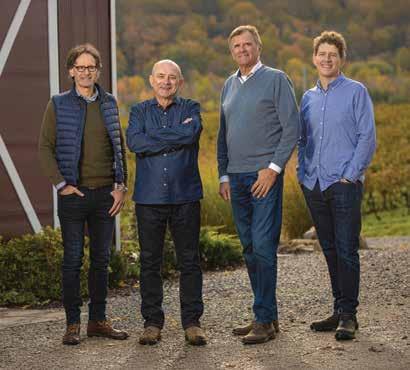
Tawse Winery: Pioneer
Twenty Mile Bench, Niagara Peninsula
Focus: Chardonnay, Pinot Noir, Riesling, Cabernet Franc, sparkling wine
In 2005, financier and Burgundy aficionado Maury Tawse envisioned and executed a state-of-the-art, gravityflow winery with a geothermal cellar and a wetlands bio-filter to facilitate water reuse. At Tawse, the focus is Burgundian-style Chardonnay and Pinot Noir, but Tawse Rieslings and sparkling wines vie for prominence. Maury strongly believes that organic farming practices directly influence soil health, grape quality, and wine complexity. And Canadians agree: The winery has been recognized four times as Canadian Winery of the Year.
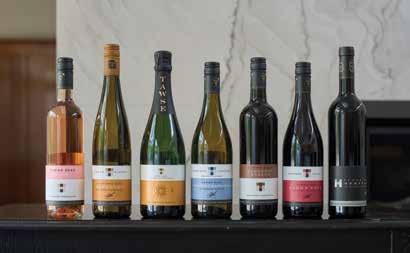
Cave Spring Vineyard’s Tom Pennachetti, winemaker Angelo Pavan, Len Pennachetti, and winemaker Gabriel DeMarco (courtesy of Cave Springs Vineyards)
From our Tawse collection: Rosé ($19.99); Sketches Riesling ($20.99); Spark Riesling ($25.99); Unoaked Chardonnay ($26.99); Cabernet Merlot ($32.99); Grower’s Blend Pinot Noir ($36.99); Meritage ($65.99)

Baskets
Online: JonesWines.com: click on SHOP
Email: saralyn@joneswines.com
Phone: 204.948.9463
204.400.0499
a Somm, 9am – 9pm)
REGULAR HOURS: Monday – Saturday: 10am – 7pm Sunday: 11am – 6pm Holidays: 12pm – 6pm
$12 for delivery under $250 within city limits (plus taxes)
Regular wine orders over $250 FREE (within city limits) Selected wines are also available for delivery through Skip the Dishes FOUR WAYS TO ORDER:
HOLIDAY HOURS:
December 18–20, 22, 23: 10am – 8pm
December 21: 11am – 6pm
December 24: 10am – 4pm
Christmas Day: CLOSED
Boxing Day: 12pm – 5pm
New Years Eve: 10am – 5pm
New Years Day: CLOSED
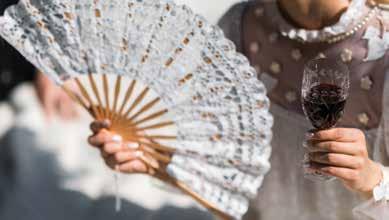
HOT FLASH!
JONES & CO'S LADIES-ONLY MENOPAUSE SERIES
Let’s talk, ladies! We are celebrating mid-life women (and women in wine too)!
In four informative sessions, Dr. Denise Black, Gynecologist, MD, FRCSC, will answer all of your questions about perimenopause and menopause in a science-based, interactive presentation. Sommelier Jill Kwiatkoski will host the event with a feature tasting of wines produced by some of our favourite women in wine! Charcuterie will be served.
Perimenopause: The Basics
Friday, October 24
Menopause 101
Tuesday, November 4
Perimenopause Plus
(A more in-depth presentation for those who have taken the previous perimenopause seminars)
Thursday, January 15
Menopause Masterclass
(A more in-depth presentation for those who have taken the previous menopause seminars)
Thursday, February 3
• Cost for each event is $65
• Events run from 7:30 p.m. to 9:30 p.m.
• All events will include wine tasting with a cheese and charcuterie board for snacking
• All events will be held in the Tuscan Room at Jones & Company Wine Merchants.
Sign up online: click on the “Events” tab at JonesWines.com
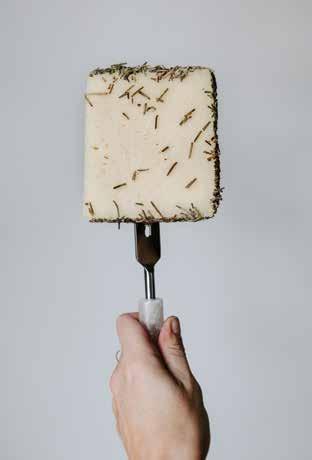
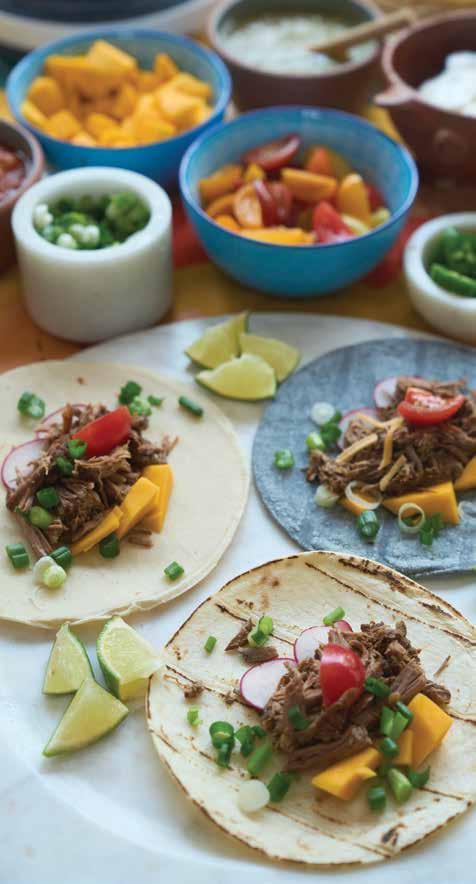
Low and Slow
By Todd Antonation, Mindy Friess, and Dylan Watkins
Photos by Ian McCausland
As the days turn cooler and shorter, there is nothing more soothing than walking into a home with a roast braising in the oven or a slow cooker gently wafting a spice-filled stew. We challenged wine experts Todd, Mindy, and Dylan to bring us their best low-and-slow recipes for winter—and they delivered! Mindy brought the perfect party spread with her slow-cooked Barbacoa-style beef tacos; Todd offered his family’s baked beans recipe and elevated it with pork belly; and Dylan created a beet and goat cheese risotto with colours that burst out of the bowl.
Each recipe is paired with wines that have the heft (and the personality) to complement the dishes—including not one but two Müller-Thurgau whites. One is from one of our favourite family wineries in Italy, Berto & Fiorella, and a second wild one is from Germany’s fun and eclectic Staffelter Hof. If you haven’t tried this grape before, then these two styles will give you a real sense of how dynamic it can be under the care of different winemakers.
BARBACOA BEEF TACOS
3 lb chuck roast
1 tsp salt
¾ tsp cracked black pepper
2 tbsp vegetable oil
11/4 cups beef broth
4 tbsp chili powder
6 garlic cloves
2 tbsp ground cumin
11/2 tbsp oregano
1/4 tsp ground cloves
3 bay leaves
1/4 cup lime juice (2-3 limes)
Cut the roast into six portions and dry completely with paper towels. Season with salt and pepper. Heat vegetable oil in a heavy skillet on high. Sear beef pieces until browned on all sides. Do not overcrowd the skillet. As they finish, transfer beef pieces to a slow cooker or Dutch oven.
SHOP LOCAL:
We love shopping at Latinos Market on Osborne for a great selection of salsas and sauces. If you like a little spice, you can also substitute three chipotle peppers for the chilli powder.
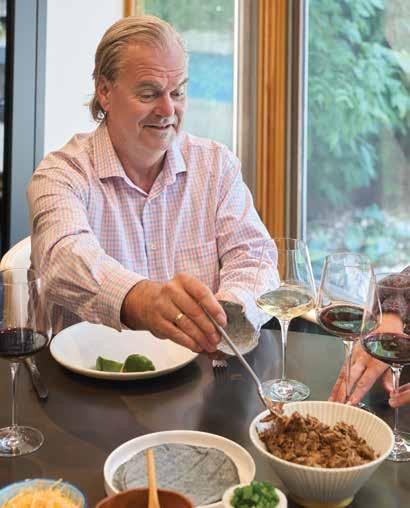
In a food processor, pulse together chili powder, garlic, and 1/4 cup beef broth until garlic is finely chopped. Whisk together the remaining beef broth with the garlic chili mixture, cumin, oregano, and cloves. Pour the mixture over the beef and nestle bay leaves into the liquid.
Cover and cook on low heat 8–9 hours.
Remove beef from slow cooker (leave broth) and shred. Stir lime juice into the broth, return shredded beef to the liquid and cook on low for 30 more minutes. Strain liquid from beef and serve on tortillas with desired toppings.
Suggested toppings: shredded old cheddar, diced tomatoes, sliced radish, diced mango, sweet peppers, green onion, cilantro, sour cream or Greek yogurt, red or green salsa, Lizano salsa, and limes.
PAIR WITH:
Berto & Fiorella 2023 Müller-Thurgau Friuli-Venezia Giulia, Italy ($24.99) Pulenta 2022 La Flor Malbec Mendoza, Argentina ($25.99) Il Palazzo 2022 Maspino Syrah Tuscany, Italy ($34.99)








Thelema Vin de Hel Muscat
BAKED BEANS WITH SEARED PORK BELLY
900 g dry navy beans
2 cups reserved bean water
1/4 cup chili sauce
1/4 cup ketchup
1/4 cup brown sugar
21/2 tbsp molasses
1 package of cured bacon (cut into pieces and fried)
1 tsp salt and pepper
1 can of tomato soup
1 medium onion (diced)
1 clove of garlic, finely chopped
Make ahead: Soak navy beans in water for 12 hours.
Drain beans and cover with 8 cups of water and boil for 30 minutes. Save 2 cups of the boiled water and drain the remainder. Place the beans in a Dutch oven or covered roasting pan with the leftover 2 cups of bean water and the rest of the ingredients. Bake at 330°F for 2.5 hours, stirring every hour. Add more water if the beans are drying up.
Pork Belly
1/2 kg piece of boneless, skin-on pork belly
1 tbsp Frescolio Picual EV olive oil
1 tsp kosher salt
1/4 tsp freshly ground black pepper
Prep ahead: Pat the pork belly completely dry with paper towels. Place skin-side up on a plate and refrigerate overnight.
Preheat the oven to 300°F and arrange the rack in the middle of the oven. Line a rimmed baking sheet with aluminum foil. Fit a wire rack onto the baking sheet if desired.
Place olive oil, salt, and black pepper in a small bowl and stir to combine. Pat dry any remaining moisture on the skin of the pork belly. Rub the salt mixture all over the pork belly, concentrating primarily on the skin. Place skin-side up on the baking sheet or rack (if using).
Roast until the pork is tender and has shrunk in size, about 2 hours. Increase the oven temperature to 450°F and continue to roast 20 minutes until the skin forms a deep goldenbrown layer of crackling on top. Transfer to a clean cutting board and let rest skin-side up for 10 minutes. Slice with a serrated knife and serve atop the beans.
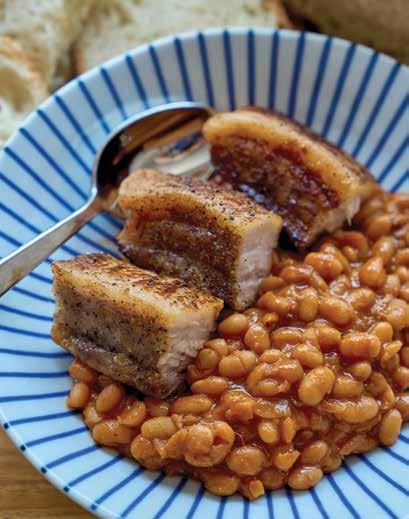

PAIR WITH:
Tawse 2021 Spark Riesling Niagara, Canada ($25.99)
Luca Marenco 2022 Dolcetto d’Alba Piedmont, Italy ($32.99) Hidden Bench 2022 Chardonnay Beamsville Bench, Canada ($37.99)

BEET RISOTTO WITH GOAT CHEESE AND CRISPY SAGE
2 medium beets
2 tbsp olive oil, plus more for frying sage
1 tbsp butter
1 cup yellow onion, diced fine
2 cloves garlic, minced
11/2 cups arborio rice
5 cups vegetable stock*
1 cup white wine
4 oz goat cheese
8 sage leaves, de-stemmed salt and pepper

Preheat oven to 400°C. Drizzle beets with 1 tbsp olive oil and wrap tightly in aluminum foil. Roast beets until fork-tender (45–50 minutes, depending on the size of the beets). Remove from the oven and let the beets cool. Once cool, peel and cut into small cubes.
In a large pot, heat 1 tbsp of olive oil and butter until melted. Add onion and sauté on medium until translucent (approx. 10 minutes). Add garlic and cook until fragrant (approx. 2 minutes). Add rice, stirring frequently until toasted. Deglaze with white wine, continuing to stir to

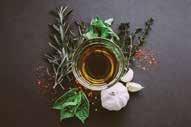


pick up any bits stuck to the pot. Slowly add stock, about 1 cup at a time, allowing the rice to absorb the stock before adding the next cup.
As you add stock to the risotto, prepare the fried sage. Heat enough olive oil in a small skillet to cover the sage leaves (depending on the size of your skillet) until the oil starts to shimmer. Test to make sure it’s hot enough by adding one sage leaf. It should crackle right away. When the oil is hot enough, cook sage leaves until they stop sizzling, then flip (a few seconds per side). Remove sage to a paper towel and season lightly with salt.
Once the rice has absorbed all stock, stir in goat cheese and diced beets. Serve immediately, topped with crispy sage.
*Homemade vegetable stock: If you want to make your own stock, fill a stock pot with vegetables and vegetable scraps (onions, carrots, mushrooms, celery, parsley, etc.), three crushed garlic cloves, 1 tsp whole black peppercorns, one large bay leaf, salt, and enough water to cover the vegetables. Bring to a boil and simmer, stirring occasionally, for about an hour. Strain vegetables and season with salt to taste. Packaged vegetable stock works just as well!
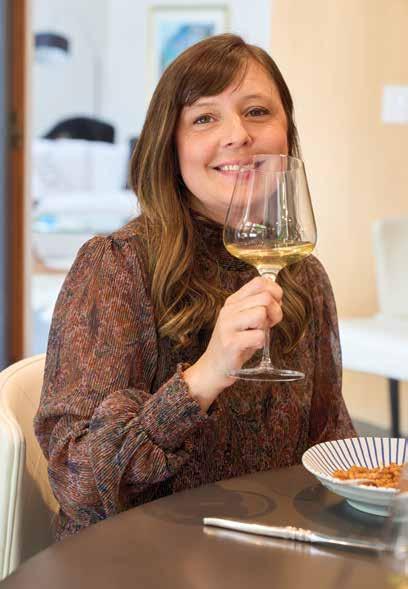


PAIR WITH:
Cantele 2023 Telero Chardonnay Puglia, Italy ($19.99)
Sella delle Spine 2023 Centènus Selection Aglianico Campania, Italy ($19.99)
Staffelter Hof nv It’s Mueller Time Sanderstruck Müller-Thurgau Mosel, Germany ($35.99)
COLLEGE MANITOBA WINE&DRINKS
WDCM continues our fine tradition of quality wine and drinks education with opportunities for wine enthusiasts, custom educational events for corporate or private groups, and training in partnership with Winnipeg’s best restaurants. Here is our fall and winter schedule!
WSET Level 1 Award in Wines
A fantastic starting point for anyone curious about the world of wine. This full-day course introduces you to the world of wine, food and wine harmony, tasting classic wine styles, and teaches you how to describe wines accurately. Upon successful completion, you will receive a WSET Level 1 certificate and lapel pin.
Dates: November 9 from 9:30 a.m. to 5:00 p.m.
Tuition: $425
WSET Level 2 Award in Wines
This qualification is suitable for beginner- and intermediatelevel wine lovers and hospitality industry professionals. In this class, you will:
• Explore a wide range of wines, grape varieties, regions, and styles.
• Gain insights into factors affecting wine quality and style.
• Develop confidence in describing wines through theory and tasting.
This course consists of 8 classes plus an exam date, and you will receive a WSET Level 2 certificate, lapel pin, and the right to use the certified WSET logo.
WESTERN CANADA’S PREMIER WINE AND DRINKS EDUCATION FACILITY OFFERS
WINE COURSES FOR EVERYONE FROM THE HOBBYIST TO THE PROFESSIONAL.
Dates: January 21 to March 11, 2026 (Wednesdays) from 6:30 p.m. to 9:30 p.m.
Tuition: Two payments of $650 (half at the start and the balance at the halfway point). Or save $100 by paying $1150 at the beginning. Please contact us for the payment plan option at lisa@joneswines.com
For additional event and class information and to register, go to joneswines.com and click on Events & Education.
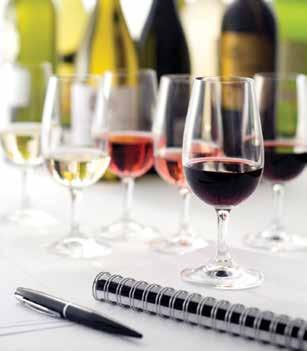
JONES
Dry January, Done Deliciously
Sober-curious? Taking on the Dry January challenge? We’ve got the perfect mid-month pick-me-up! Spend the evening sipping sophisticated non-alcoholic wines and discovering alternatives you’ll actually want to drink.
• Guided tasting of creative alcohol-free options
• Flavourful small bites to pair with your pours
• A celebratory way to mark the halfway point through January
Event Date: Friday, January 16, 2026 @ 7:00 PM | Tickets: $75 per person (Only 24 seats available)
Sip Like a Critic: 90+ Point Wines
For the wine enthusiast who craves the best, join our expert-led tasting of top-rated wines — all awarded 90 points or higher by leading critics.
• A curated lineup of critically acclaimed bottles
• A charcuterie board to balance and elevate your palate
• The ultimate treat for the wine lover in your life
Event Date: Thursday, January 22, 2026 @ 7:00 PM | Tickets: $125 per person (Only 24 seats available)
Blind Tasting Basics: Unlock Your Inner Sommelier
Think you know wine? Put your skills to the test! This immersive blind tasting workshop will sharpen your palate and train you to recognize what’s really in your glass.
• Guided flight of mystery wines to decode
• Expert coaching from certified tasters
• Best for those with some wine education or tasting experience
Event Date: Thursday, February 5, 2026 @ 7:00 PM | Tickets: $75 per person (Only 24 seats available)
A Premium Tour of Italy
Journey through Italy, one glass at a time. From Piedmont to Sicily, discover iconic and hidden-gem wines that showcase the country’s incredible diversity.
• A tasting flight spanning Italy’s top wine regions
• Charcuterie and snacks to complement your trip
• Stories and insights that bring each region to life
Event Date: Saturday, February 26, 2026 @ 7:00 PM | Tickets: $125 per person (Only 24 seats available)

Name Dropping Is Not Enough
By Sylvia Jansen, DipWSET, CSW, Sommelier
Of all the overworked words in wine, perhaps the most annoying are grape variety names. These are often thrown about so loosely that their identities become shrouded in cliché. Just say the name, and for many wine lovers, one particular style comes to mind.
If anybody orders Merlot, I’m leaving.
I only drink Cab.
Anything but Chardonnay.
Many wines are marketed by grape variety. Some restaurant lists name the (dominant) variety alongside price as though that is enough information for the guest to decide. Wine lovers use these names to explain (sometimes forcefully and immovably) what they like and do not like. Food and wine pairing recommendations often drop the grape name only, as though there is but one Chardonnay or Riesling or Pinot Grigio. The variety name is an easy tag but becomes the worst sort of name dropping—a broad brush for a topic requiring fine strokes.
Grape variety is, to be sure, an important building block for a wine. Every variety brings its own aromas and flavour profiles, natural levels of acidity and sugar levels, and (in reds) tannin levels. However, variety is only one element in a complex potion of conditions, decisions, and financial concerns. The sum of growing environment, people, culture, and the intentions of winemakers has massive impacts on the finished wine.
So should I order that Chardonnay? Will I like it? Will it taste the way I think it ought?
The answers go far beyond the name— and, in fact, beg more questions. Where was that Chardonnay grown? Were the vineyards in a warm or cool climate, where the temperature and length of the growing season profoundly affect ripeness, fruit expression, and acidity levels? How about the nature of the wine’s tingle and tang? Has the winemaker taken the wine from sharp, applelike malic acids to rounded, creamy acidity (malolactic conversion—a geeky term with a big impact), or blocked the conversion to keep the wine sharp and tight? Has that Chardonnay seen any oak in its rearing (and if so, were they genuine barrels, new or used, or just oak chips thrown into a tank)? Just naming the variety cannot begin to answer these questions, because the possibilities are endless.
From Chardonnay, we could expect the deliciously elegant, crunchy orchard fruit and steely razorback of a classic quality Chablis. On the other end, a great Meursault serves up an opulent barrel-fermented-and-aged, almost-tropical, hazelnut, lemongrass, and fresh butter croissant quality that fills the palate and dominates the moment. These two wines are almost from different planets, yet both are Chardonnay. A myriad of Chardonnay styles exist in the world, with hosts of winemakers interpreting the variety in their own environments. Some model their Chardonnays after Chablis or Meursault, and some do not. There are also wines (mostly modestly priced) where Chardonnay is blended with local varieties, but the name Chardonnay is prominent on the label to trade on its fame.
Our venerable VP Mike Muirhead is known to say that if you do not like Chardonnay, you have simply not met the right one. Any given Chardonnay might be the most ordinary, everyday, generic tipple that you should cellar no longer than next Tuesday, or it might be a spectacular showstopper with a heart-stopping price tag that you tuck away to open during the 2038 Winter Olympics. These distinct possibilities become easy to forget when we focus solely on the variety.
To waylay the name-dropping habit, we can ask a few questions about the wine behind the variety name and be open to the possibility of being delighted by what we taste. So here’s to you, just naming it out.


